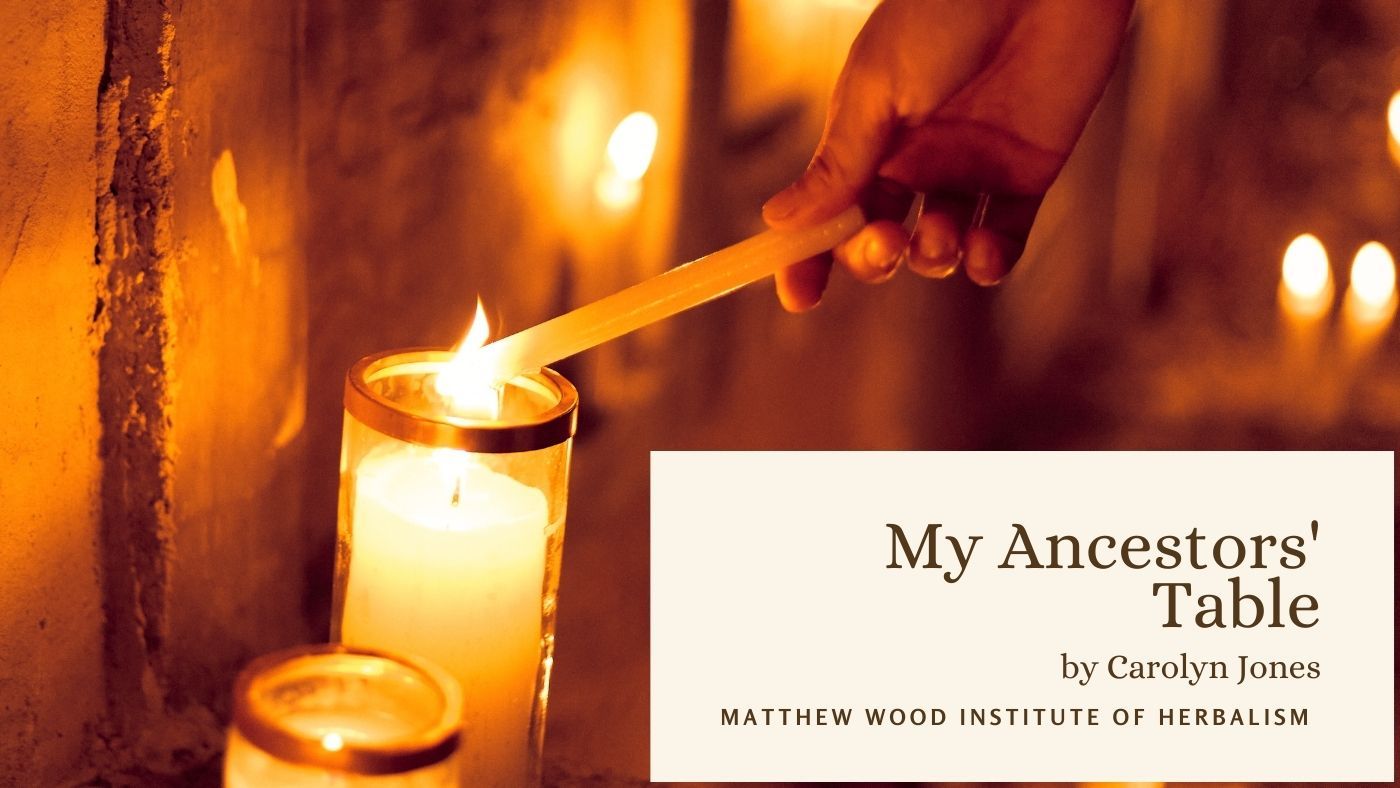| “God is gracious. God is good. And, we thank Him for our food.” |
This is how my mother and I began every meal in our home. Mattie Jones-DuPree was a devout Baptist who made it a point to instill in me, her only child, that there was a Higher Power ultimately in charge of our well-being.
We approached our dining experience humbly and with great anticipation. My mother was a great cook. And, I love to eat.
Black-eyed peas, okra (not so much), sweet potatoes, cornbread stuffing, spicy sage sausage, hominy grits, fried whiting, porgies, butterfish, hoppin’ John, succotash, corn on the cob, fried green tomatoes, cole slaw, cabbage and potatoes, string beans and ham, lima beans and neckbones, fatback, salmon cakes, tuna fish cakes, baked ham, barbeque spare ribs, chicken and dumplings, fried chicken livers, liver and onions, cornbread, sweet potato pie, macaroni and cheese, iced tea, lemonade, limeade, homemade ice cream (made from new-fallen snow), and…are you hungry yet?
Cow tongue, calf brains, and pig ears, feet, and tails were off-limits for me.
When I was born in 1949, Southern cuisine did not have a name. All I knew was that I wanted to be at the table when those hot, buttery biscuits were served.
It wasn’t until 1964 that the foods and cooking style associated with the African American palate in the United States of America was used to denote Black Pride.
One of my all-time favorite memories is when my friends and I got together, all decked out in our bell bottoms and dashikis, to devour soul food and bounce our wooly Afros to the rhythm of soul music.
I developed a love for cooking at a very young age. I watched my mother fry chicken, fascinated by the hot cooking oil as it bubbled around the chicken legs and thighs that would soon find their place on a plate next to a serving of collard greens and fluffy mashed potatoes. Scattered specks of black pepper on a crispy golden-brown skin promised to be a dream come true. The first bite had to yield an audible crunch to really be soul-satisfying.
I wanted to create that crunch for my mother. So, one day, I came home from school on a mission. I was going to fry the chicken!
I lined up my seasonings: salt, pepper, paprika, and cooking oil. This was going to be good!
I watched as the chicken just cooked and cooked. Yet, there was no golden. No brown.
Thankfully, my mother came home while I was in the midst of this fiasco. I was pretty sure that the chicken had plotted against me.
“Mommy, I wanted to surprise you. I wanted to fry the chicken for you, but the chicken won’t get brown,” I said in an accusing tone. I can still hear myself some 60 years later.
She walked into the kitchen bursting with curiosity. When she took a look in the frying pan, her eyes twinkled. She could not contain her amusement.
“You didn’t flour the chicken,” she chuckled.
She washed her hands and laid out a piece of waxed paper onto which she poured some flour. She then carefully removed the pale chicken from the pan and coated each piece with flour and placed it back in the hot oil to complete the job. Dinner was saved!
It was in that moment that I learned that cooking errors can be corrected. It was a teaching moment that has lasted throughout my life.
Let me prove that point.
I was recently in a kerfuffle (I’ve always wanted to use that word) with a ready-made pie crust. I had already prepared a delicious apple pie filling that I refused to let go to waste. So, I broke the dough up and scattered it in the baking pan. I baked it until it was a light brown and poured the apple filling on top. I then stuck it in the oven to finish browning. I was satisfied. It was ugly but delicious. I called it apple pie bread. Hey! My five-year-old great-grandson, Prince, asked for seconds and thirds.
“Gram-Gram, may I have some more apple pie bread?”
Of course, you may, sweetheart. Of course, you may.
Soul food has taken on a different look over the years because it has been identified as a dietary detriment that involves a health-threatening level of meat, fat, and sugar. Some illnesses include but are not limited to obesity, diabetes, high blood pressure and cholesterol, heart disease, and strokes.
Somehow, no matter how injurious, soul food ranks high on the list for families who remain rooted in Southern traditions. I must admit that it is delicious. However, speaking for myself, the cost is way too high to ignore when my health is at stake.
The early beginnings of soul food began with scraps from the oppressor’s table. To quote the iconic poet, Nikki Giovanni, “…if we can't have ham, we will boil chitterlings; if we are given rotten peaches, we will make cobblers…”.
I cannot abide chitterlings, although some folks can’t keep their mouths from watering at the thought of the succulent (foul-smelling) delicacy, otherwise known as the small intestines of a pig. I distinctly remember sticking my head out of the front door to inhale fresh air as my mother “cleaned” the chitterlings. Alright. The quotation marks are dramatic. I guess they were clean. I was able to sit at the table as others enjoyed them. I just couldn’t watch them do it.
Now, what I did enjoy were fried pork chops smothered in brown gravy with lots and lots of onions. A complete meal for me would be those yummy pork chops with white rice and string beans. Or, perhaps creamed corn and spinach.
I believe that my mother’s insistence on having a balanced meal helped me escape the otherwise damaging effects of soul food. ‘Pot likker’ from the collard greens was a scrumptious stomach-warming drink after the collard greens cooked down. I didn’t know that the juice from that boiled vegetable was nutritious, but she did. The scientists didn’t tell her. This information was passed down through generations and generations of cooks. It was just life as she knew it.
My mother was a Georgia Peach, the youngest daughter of sharecropper parents, and especially proud of her vegetable garden at 27 Monaco Place in Brooklyn, New York. Just for the record, sharecroppers were actually agriculturalists. They planted seeds, tended the land, and harvested the crops.
She grew collard greens, string beans, corn, cucumbers, and tomatoes. She also frequented Pitkin Avenue where Jewish merchants responded to the needs of the community by selling the food that was popular in Black households.
I also remember accompanying my mother going to a Brooklyn slaughterhouse to purchase fresh chicken. Once again, I couldn’t stand the smell, but I certainly enjoyed the benefits of a taste that I now know is clearly lost after spending time in a supermarket display case.
The 1960s was a time when intergenerational interaction was the norm. We loved feeling included. We were in our late teens and we felt “grown” when the elders would host card parties that we could attend and not be exposed to the seamier side of life. There was no profanity or lewd behavior because “the children” were there. We were special.
We were in the front parlor with the adults who preferred innocent card games: penny pokeno, blackjack, and bid whist (my favorite). The back room was for the cigarette-smoking, liquor-imbibing, salty-talking high rollers. We never heard them. We just knew and exchanged glances as we grinned with our mouths full of hostess hospitality.
The common denominator was the food. My friends and I were never disappointed. We would whisper among ourselves about what we saw in the kitchen and waited with great anticipation for food to be served.
Plates of potato salad, cole slaw, collard greens, fried chicken, fried fish, and white bread made for a very pleasant evening—win or lose.
African Americans have a New Year tradition of making sure a feast is on the stove cooking at midnight. It is symbolic of the desires of each and every Black family’s heart. Black-eyed peas represent good luck, collard greens and cornbread represent wealth.
Mornings gave us Aunt Jemima, a regular guest at our breakfast table. No, not the woman. The caricature. Nothing pleased my eyes (and my stomach!) more than pancakes drowning in Alaga syrup.
In The Welcome Table authored by renowned historian and chef, Jessica Harris, I learned that Alaga syrup is an abbreviation of Alabama, Louisiana, and Georgia. Who knew? Who cared? Delicious!
The Encyclopedia Britannica documents Aunt Jemima as a real person named Nancy Green who helped market the self-rising pancake mix originally produced by Pearl Milling Company, now owned by PepsiCo. Those pancakes served with well-done link sausage (pork, of course!), drenched with Alaga syrup could chase rain clouds away instantly!
Fatback was used to season greens. I loved it when my mother put some aside to be eaten with grits or just…well…eaten. Fatback is the clear fat from the back of a pork loin. My mother would fry it up and use the grease to season other dishes. In my home, it was called “strick ‘a lean, strick ‘a fat.” Translated that means ‘a streak of lean and a streak of fat.’ In other words, a thin line of lean pork and a broad line of fat pork fried to crispy perfection.
I know that the way I am describing these dishes makes it sound as if I have a refrigerator stuffed with all of the childhood delicacies I enjoyed.
Such is not the case.
I have since learned how to make delicious meatless collard greens. Garlic, onions, and a few flakes of crushed red pepper bring a tingling excitement to the tongue. Long gone is the delicious chunk of ham for seasoning.
I love cooking black-eyed peas down to a gravy-like consistency and putting it over rice. A dash of sea salt, some onions, and garlic make everything right.
Plant-based sausages seasoned with Old Bay, garlic powder, onion powder, and sage have taken the place of pork sausages.
Plant-based eggs add the fluff I need to my gluten-free pancakes sprinkled with cinnamon, and a drizzle of warm raw honey has replaced Alaga syrup. I have an egg allergy that causes sinus congestion.
I love baking or boiling sweet potatoes and allowing plant-based butter to melt in the middle. Dairy products produce excess mucus.
Raw salads with all types of lettuce, dandelions, arugula, multi-colored grape tomatoes, cucumbers, onions, capers, and avocados top off my meals these days.
Over the years, I have learned how to modify my childhood appetite to complement my gerontological needs.
My body cannot tolerate sugar. Excruciating joint pain is the undesirable outcome of submitting to a sugar craving. Soda and other sugary drinks, cookies, and rich cakes slathered with colorful icing are an absolute “no-no.”
But, all is not lost! Have you tried cacao cake? I don’t usually like cake just out of the oven, but there is an exception to every rule and cacao cake is it!
Packed with flavonoids, cacao helps lower blood pressure. It also improves blood flow to the brain and heart, assists in preventing blood clots, and can reduce the risk of diabetes.
With those benefits and that rich, moist burst of flavor, I can easily walk past a traditional chocolate cake - my favorite dessert of all time!
As with most things, this stroll down memory lane must come to an end. And, not a minute too soon. I am so full, I could burst.
I hope you enjoyed walking with me. Come again.
Join Carolyn Jones and Matthew Wood, MS in a class on Black Folk Herbalism looking into the rich history of Black plant medicine.
**Disclaimer**
The information provided in this digital content is not medical advice, nor should it be taken or applied as a replacement for medical advice. Matthew Wood, the Matthew Wood Institute of Herbalism, ETS Productions, and their employees, guests, and affiliates assume no liability for the application of the information discussed.
The information provided in this digital content is not medical advice, nor should it be taken or applied as a replacement for medical advice. Matthew Wood, the Matthew Wood Institute of Herbalism, ETS Productions, and their employees, guests, and affiliates assume no liability for the application of the information discussed.


